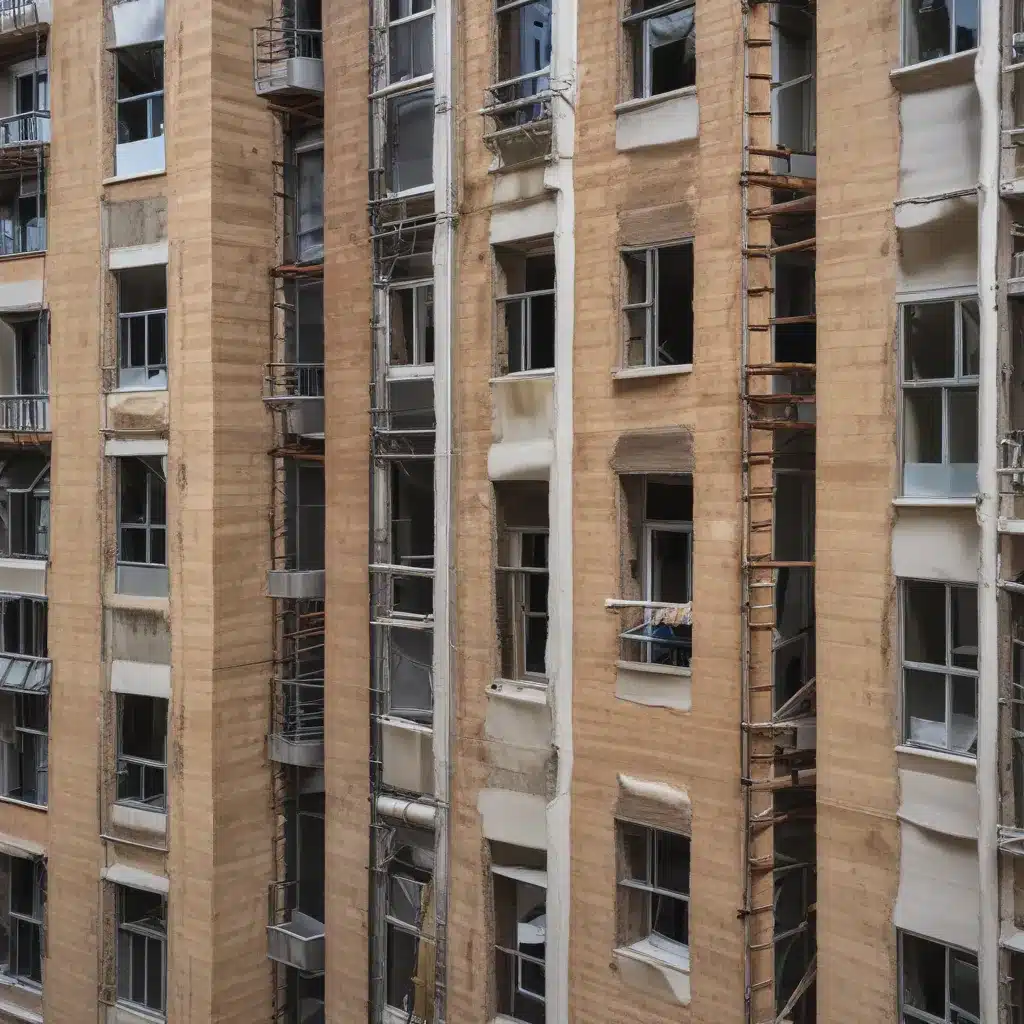
Prioritizing Water Conservation and Efficiency
As a seasoned construction professional and interior designer, I’ve observed the growing emphasis on sustainability in the multi-family and mixed-use development sectors. One area that holds tremendous potential for improving environmental performance is plumbing design and water management. By implementing targeted sustainable plumbing strategies, developers can not only reduce resource consumption but also enhance the long-term value and livability of their projects.
At the heart of sustainable plumbing lies the principle of water conservation. In multi-family buildings, where water usage can be significant due to the concentration of residents, implementing water-efficient fixtures and systems can lead to substantial savings. The U.S. Environmental Protection Agency’s (EPA) WaterSense program has established performance criteria for plumbing products, helping builders identify and select high-efficiency options. By exceeding the minimum water use reductions required by building codes, projects can earn points under green building programs like LEED and the Chicago Sustainable Development Policy.
Beyond fixtures, the integration of water reuse technologies can further enhance a development’s sustainability profile. Strategies such as greywater harvesting, where untreated wastewater from sinks, showers, and washing machines is recycled for non-potable uses like landscape irrigation, can significantly reduce the demand for fresh water. Coupling these systems with smart water metering and leak detection can provide building managers with the data and tools needed to monitor and optimize water consumption.
Stormwater Management: Reducing Runoff and Promoting Infiltration
Effective stormwater management is another critical component of sustainable plumbing in multi-family and mixed-use projects. The City of Chicago’s Stormwater Ordinance requires developments to manage both the rate and volume of stormwater runoff, with the goal of mitigating the strain on the city’s combined sewer system. By exceeding these baseline requirements, projects can earn additional points through the Chicago Sustainable Development Policy.
One such strategy is to provide storage volume for 125% or 150% of the required stormwater, slowing the release rate and reducing the burden on the sewer infrastructure. For sites with suitable soil conditions, developers can take this a step further by designing systems that infiltrate 100% of the stormwater into the ground, avoiding any discharge to the combined sewer. This approach not only reduces runoff but also replenishes groundwater supplies and helps mitigate the urban heat island effect.
Complementary stormwater management techniques, such as the incorporation of green roofs, bioswales, and permeable pavement, can further enhance a project’s sustainability. Green roofs, for example, can absorb stormwater, reduce urban temperatures, and provide habitat for wildlife, all while extending the life of the roof membrane. Carefully integrating these nature-based solutions into the site design can create a visually appealing, functional, and environmentally responsible landscape.
Optimizing Plumbing System Design and Layout
Beyond water conservation and stormwater management, thoughtful plumbing system design and layout can contribute to the overall sustainability and long-term performance of multi-family and mixed-use developments. Strategies such as centralizing mechanical rooms, locating plumbing risers in common areas, and providing easy access for maintenance can simplify operations and reduce energy consumption associated with water heating and distribution.
In-unit plumbing configurations are also an important consideration. For rental properties, placing mechanical systems in common areas rather than within individual units can facilitate easier access for maintenance teams, minimizing disruptions to tenants. This approach can be particularly beneficial in projects targeting college students or young professionals, where turnover may be more frequent.
Specifying durable, high-quality plumbing materials and fixtures can also contribute to the long-term sustainability of a development. While initial costs may be higher, these investments can pay dividends in the form of reduced maintenance, extended product lifespans, and greater water efficiency over time. Careful material selection, coupled with thoughtful installation practices, can help ensure the resilience and reliability of a multi-family or mixed-use project’s plumbing systems.
Integrating Sustainable Plumbing with Broader Design Strategies
Sustainable plumbing strategies should not be viewed in isolation but rather as part of a holistic approach to sustainable design and construction. By aligning plumbing systems with other energy-efficient building features, developers can maximize the overall environmental performance and livability of their projects.
For example, the integration of passive design principles, such as optimal building orientation, high-performance windows, and effective insulation, can reduce the heating and cooling loads on a building, consequently lowering the demands on the domestic hot water system. Similarly, the selection of energy-efficient appliances and fixtures can further enhance a project’s water and energy efficiency.
Beyond the built environment, sustainable plumbing strategies can also support broader community-level objectives. Locating multi-family and mixed-use developments near public transit hubs, as encouraged by the Chicago Sustainable Development Policy, can reduce the reliance on private vehicles and the associated water demands for car washing and landscape irrigation. Encouraging alternative modes of transportation, such as biking, can also contribute to a more sustainable and livable urban environment.
Conclusion: Elevating Sustainability through Plumbing Design
As the multi-family and mixed-use development sectors continue to evolve, the integration of sustainable plumbing strategies has emerged as a crucial component of responsible building practices. By prioritizing water conservation, efficient stormwater management, and thoughtful system design, developers can not only contribute to environmental stewardship but also enhance the long-term value and livability of their projects.
The team at Local Builder London is committed to staying at the forefront of sustainable construction and design, leveraging our expertise to help clients achieve their goals. Whether you’re planning a new multi-family development or exploring retrofit opportunities, we are here to provide practical guidance and innovative solutions to elevate the sustainability of your plumbing systems.


